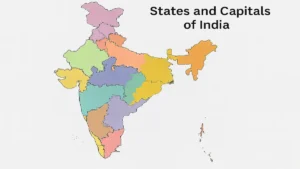The heaviest rocket LVM3 of the Indian Space Research Organization (ISRO) will launch 36 satellites of British start-up OneWeb Broadband Communication Satellites from the spaceport in Andhra Pradesh’s Sriharikota on October 23, 2022. It will mark the the launcher’s entry into the global commercial launch service market.
What The ISRO Said:
“This contract with M/s OneWeb is a historic milestone for NSIL and ISRO, as LVM3 is making its entry into the Global commercial launch service market. As part of the Contract, 36 satellites will be placed into orbit by one LVM3, from Satish Dhawan Space Centre,” ISRO had said.
“Cryo stage, equipment bay (EB) assembly completed. Satellites are encapsulated and assembled in the vehicle. Final vehicle checks are in progress,” it said.
Commercial Arm of the ISRO:
New Space India Limited (NSIL), a CPSE under the Department of Space and the commercial arm of the ISRO, has signed two launch service contracts with M/s Network Access Associated Limited (M/s OneWeb), United Kingdom, for launching OneWeb LEO Broadband Communication Satellites on board ISRO’s heaviest launcher LVM3.
About OneWeb:
OneWeb is a global communications network, powered from space, enabling connectivity for govemments, businesses, and communities. It is implementing a constellation of Low Earth Orbit satellites. India’s Bharti group serves as a major investor and shareholder in OneWeb.
Two solid strap-on boosters and a liquid core stage of LVM3 have been fully integrated at the second launch pad at Satish Dhawan Space Centre, SHAR. Integration of 36 OneWeb satellites after successful completion of health checks have been assembled with the dispenser unit.
With this launch, OneWeb will have over 70 per cent of its planned ‘Gen 1 LEO constellation‘ in orbit as it progresses to deliver high-speed, low-latency connectivity services around the world, the company said in a statement. An additional launch will take place this year, while three more launches are targeted for early next year to complete the constellation, OneWeb said.
ISRO’s Launch Vehicles:
- For Lower Earth Orbits:
- Several satellites need to be deposited only in the lower earth orbits, which starts from about 180 km from earth’s surface and extends up to 2,000 km.
- Most of the earth-observation satellites, communication satellites, and even the International Space Station, a full-fledged laboratory in space that hosts astronauts, function in this space.
- It takes a smaller amount of energy to take the satellites to low-earth orbits, and accordingly smaller, less powerful, rockets are used for this purpose.
- Several satellites need to be deposited only in the lower earth orbits, which starts from about 180 km from earth’s surface and extends up to 2,000 km.
- For Higher Orbits:
- There are other satellites which need to go much deeper in space.
- Geostationary satellites, for example, have to be deposited in orbits that are about 36,000 km from earths’ surface.
- The planetary exploration missions also need their rockets to leave them much deeper in space.
- For such space missions, much more powerful rockets are used.
- In general, there is a trade-off between the weight of the satellite that needs to be launched, and the distance it needs to be taken to. The same rocket can take smaller satellites much deeper into space compared to a heavier satellite.
India has two operational launchers: Polar Satellite Launch Vehicle (PSLV) and Geosynchronous Satellite Launch Vehicle (GSLV).
- PSLV’s (Polar Satellite Launch Vehicle) first launch was in 1994, and it has been ISRO’s main rocket ever since. Today’s PSLV, however, is vastly improved and several times more powerful than the ones used in the 1990s.
- Presently, it has three Variants: PSLV – CA (Core Alone), PSLV-G, PSLV – XL.
- PSLV is the most reliable rocket used by ISRO till date, with 52 of its 54 flights being successful.
- The vehicle successfully launched two spacecraft – Chandrayaan-1 in 2008 and Mars Orbiter Spacecraft in 2013 – that later traveled to Moon and Mars respectively
- GSLV (Geosynchronous Satellite Launch Vehicle) is much more powerful rocket, meant to carry heavier satellites much deeper into space.
- This fourth generation launch vehicle is a three stage vehicle with four liquid strap-ons.The indigenously developed Cryogenic Upper Stage (CUS), which is flight proven, forms the third stage of GSLV Mk II.
- Till date, GSLV rockets have carried out 18 missions, of which four ended in failure.
- GSLV carried the Chandrayaan-2 mission, and is slated to take the Gaganyaan manned space mission as well.
- The next variant of GSLV is GSLV Mk III, with indigenous high thrust cryogenic engine and stage, having the capability of launching 4 tonne class of communication satellites, to the geosynchronous transfer orbit, close to 36,000 km from earth’s surface.
- It can take 10,000-kg satellites to the lower earth orbits. Mk-III versions have made ISRO entirely self-sufficient for launching its satellites.
- Before this, it used to depend on the European Arianne launch vehicle to take its heavier satellites into space.
To Know More About ISRO’s Important Missions, Please Read This Article:







 States and Capitals of India, Check the ...
States and Capitals of India, Check the ...
 Solar Eclipse in September 2025: Check D...
Solar Eclipse in September 2025: Check D...
 Daily Current Affairs 18th September, 20...
Daily Current Affairs 18th September, 20...

